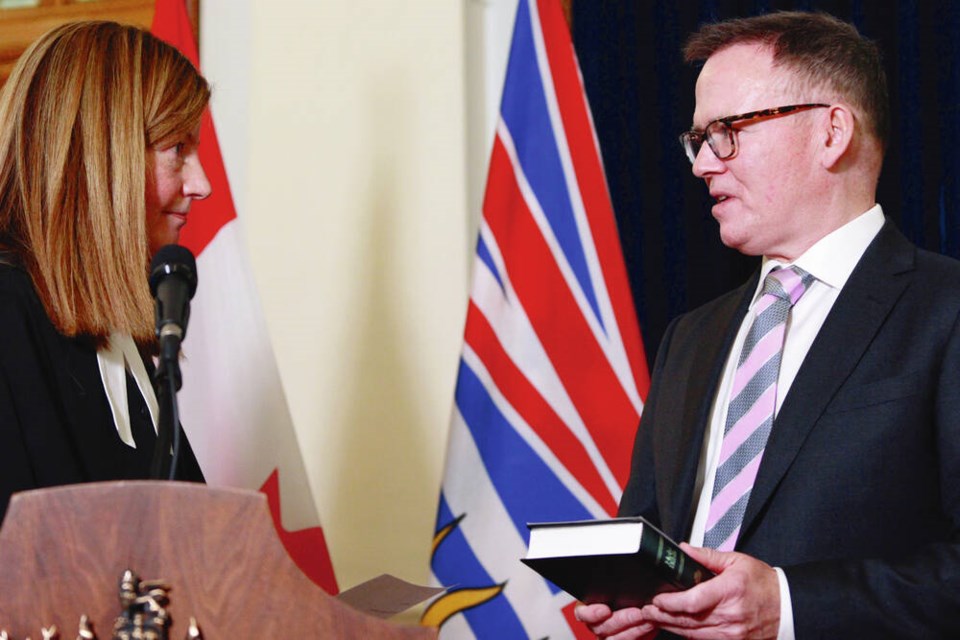For all the “seismic concerns” the NDP government has developed about the Royal B.C. Museum, the decision to tear it down and build a new one is creating a political earthquake.
It’s turning into a significant crisis for a government that’s weathered a few of them over the past five years. This one is entirely self-inflicted and it’s changed the political tone in the space of a few days.
It’s still mostly a local issue that may or may not engage the whole province. But it could develop into a major moment in the life of this five-year-old government.
It comes just when NDP ministers were appreciating a lull in the pandemic, maybe even a gradual retreat. Cabinet was just getting some breathing room to refocus on the regular agenda of issues.
Then Premier John Horgan ignited a whole new firestorm on Friday (the 13th) by committing to spend $789 million tearing down and replacing a popular facility that nobody knew was being structurally condemned.
The decision coincided with the arrival of Kevin Falcon as the new B.C. Liberal leader, who looks ready to rejuvenate an opposition that’s been marking time. So after watching a visceral, negative “are you kidding me?” reaction build over the weekend, he was sworn in, and his first swing at bat was the museum — a juicy, belt-high pitch right over the plate.
He connected. It was hard not to, given the wave of criticism from all quarters that greeted the announcement. Both Liberals and Greens continued swinging Tuesday. After Tourism Minister Melanie Mark justified the expense by saying part of the museum is below sea-level, Falcon reminded her the NDP is forcing commuters to spend years in the Massey Tunnel under the Fraser River after cancelling the B.C. Liberal bridge plan. (And at a time when rising sea levels are a worry, they’re pressing ahead — with an even bigger tunnel.)
Separate from that, the basement storage problem is already being addressed by the $224.4 million archive and collections building that is in the works for Colwood. Subtract seismic as a legitimate reason.
The idea that it will symbolize Indigenous reconciliation, which was stressed at the announcement, is also very much open to question. It prompted a compelling argument Tuesday, where two Indigenous MLAs squared off. Mark, of Nisga’a, Gitxsan, Cree and Objibway heritage,defended the project.
B.C. Green MLA Adam Olsen, of the Tsartlip First Nation, told her “a shrine to house the systemic rot” of historic Indigenous oppression “is not the solution.”
In an emotional second day of lambasting the decision, he said: “The museum’s problem is how they relate to Indigenous people. It has been identified as a terrible place for Indigenous people to work. It cannot be fixed by a bigger, brighter, shinier museum built with mass timber and wrapped in a Lekwungen-inspired veneer.”
He later said he was moved to tears at the idea the government is putting up a monument instead of returning culturally significant items to First Nations from whom they were taken.
Mark said the government is working with First Nations to get their validation and follow protocol. Esquimalt and Songhees leaders were on hand at the announcement last week and gave every indication they supported it.
She also said that her team is “working round the clock” to release the business case behind the decision to demolish and rebuild. There is a lot riding on the document — whatever version of it is released.
It has to provide a clear explanation of how a vague “modernization” concept turned into a decision to shut the entire facility down this September and spend more than seven years demolishing, remediating the site and building a new one.
(Also, it would be good to get an explanation for why the most recent “risk register” for the facility — from 2015 — that’s included in the current service plan makes no mention of any widespread decrepitude or system failures.)
Horgan and Mark have so far missed the mark defending this project. Maybe they dropped the ball, or maybe the concept is simply indefensible. The business case will have to be pretty compelling to change the direction this argument is taking.




